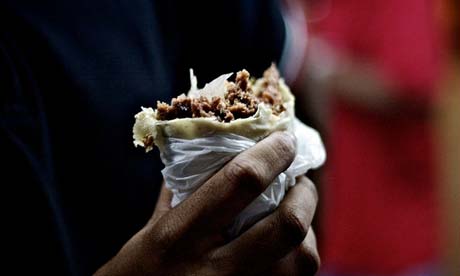
India is rich in culture and life – but there are some cultures and some life that you really want to avoid. Here we highlight the subcontinent's biggest risks
Anyone travelling to a new destination has some kind of mental image of what they will encounter. Some worry about health hazards; others assume that if they’ve had the right jabs then nothing bad can possibly happen.
The UK Consumers’ Association published a report on the incidence of travel-related illness among travellers to various countries, which said that 40% of visitors to India reported illnesses, compared to 27% in Kenya and 5% in Belgium. Mexico was the worst, with 58%, but India recorded the highest incidence of serious illness (eg malaria) – one in 25 contracted serious illness there.
India is one of the unhealthiest destinations on offer – for the ill-informed. But what are the risks and are there any effective precautions?
Most visitors to India arrive in Delhi – a city where I’ve always found I’m on the lookout for problems. Even friends of mine from Nepal and southern India are on their guard in Delhi, fearing robbery and rip-off.
A good first precaution on arrival in any Indian city is to stick with the crowd and ask about the safest way to get into town – prepaid options are good. Delhi driving is an experience – there were so many road accidents that a neon sign was erected on a key junction displaying a running total of the city’s road deaths… until it was realised that drivers, distracted by trying to read the latest figures, were causing even more accidents.
Before climbing aboard, eye up the vehicle and its driver. Is he drunk or high? Does he appear to be able to see, and use all limbs? And avoid motorbikes – they are deathtraps.
If you survive the roads, the problem you are next most likely to encounter is a stomach upset. Studies suggest that you’re most likely to pick up a bug in the first seven days after arrival in a tropical destination, so it is worth being especially cautious during that first week. Dukoral cholera vaccine also gives some protection against bacterial causes of gastroenteritis. There are other precautions you can take, although experts continue to debate which are the most effective (see Rules for avoiding Delhi belly).
Malaria is present throughout India year round, excluding altitudes above 2,000m. Rajasthan and Orissa have plenty of falciparum malaria – the serious form that can develop into cerebral malaria. There is chloroquine resistance in India so seek expert medical advice about prophylaxis before you go – you’ll probably need to take Lariam, Malarone or doxycycline. Bite prevention is also crucial: use DEET-based insect repellents and cover up at dusk.
The other disease you can get from mosquitoes is dengue fever, which is quite a problem in India. There is no vaccine so you must also be vigilant about bite prevention during the day.
Japanese encephalitis is a nasty, mosquito-borne infection that is a huge problem among the rural poor during the monsoon. Travellers who are living rough in India during the rains should get vaccinated.
Dum-dum fever, aka leishmaniasis, can be caught from sandfly bites when sleeping on the ground: use a campbed, tent with sewn-in groundsheet or hammock.
I’ve experienced temperatures up to 55ºC in pre-monsoon India (May/June), when it is difficult to drink enough to keep up with the amount of water lost in sweat – adding oral rehydration salts helps. It is important to carry a 1L water bottle with a good seal so that you can constantly sip safe drinks. Drink enough so that you void a good bladderful at least three times a day. Also pack sunglasses, sunscreen, a hat and light, breathable clothes.
There are about 25,000 cases of rabies in India each year. The risk is from dogs, kept half-starved to guard villages and encouraged to attack strangers. People travelling long term or heading into remote regions should be immunised; healthcare facilities are patchy and vaccine is not always available. Pre-travel immunisation makes post-bite treatment easier, cheaper and less risky.
It is all available in India but there are many pockets of orthodoxy where a revealing shirt or shorts may offend or attract more attention than you want. Discover what can and can’t be worn, and what is offensive locally.
It is easy to buy mind-altering substances on the streets but realise that, as well as the legal implications, getting legless in an unfamiliar place can lead to robbery, rape, accidents or drowning. And unprotected sex also comes with the risk of 27 different infections, including HIV. India is a wondrous place but she offers plenty of scope for disaster.
Boil it, cook it, peel it or forget it.
Only drink water that has been boiled or disinfected with chlorine, iodine or other suitable products. Beverages such as hot tea or coffee, wine, beer, carbonated water or soft drinks, and bottled or packaged fruit juices are usually safe.
Avoid ice, unless you are sire it's made of safe water.
Avoid raw food, especially seafood. The exceptions are fruits and vegetables that you have peeled or shelled yourself.
Eat food that is thoroughly cooked and is still hot when served. Cooked food that has been held at room temperature for hours and served without being reheated can be a serious source of infection.
Boil unpasteurised milk before drinking it.
Ice cream from unreliable sources is frequently contaminated and can cause illness.
Be sure that meals from street vendors are cooked thoroughly in your presence and do not contain any uncooked foods.